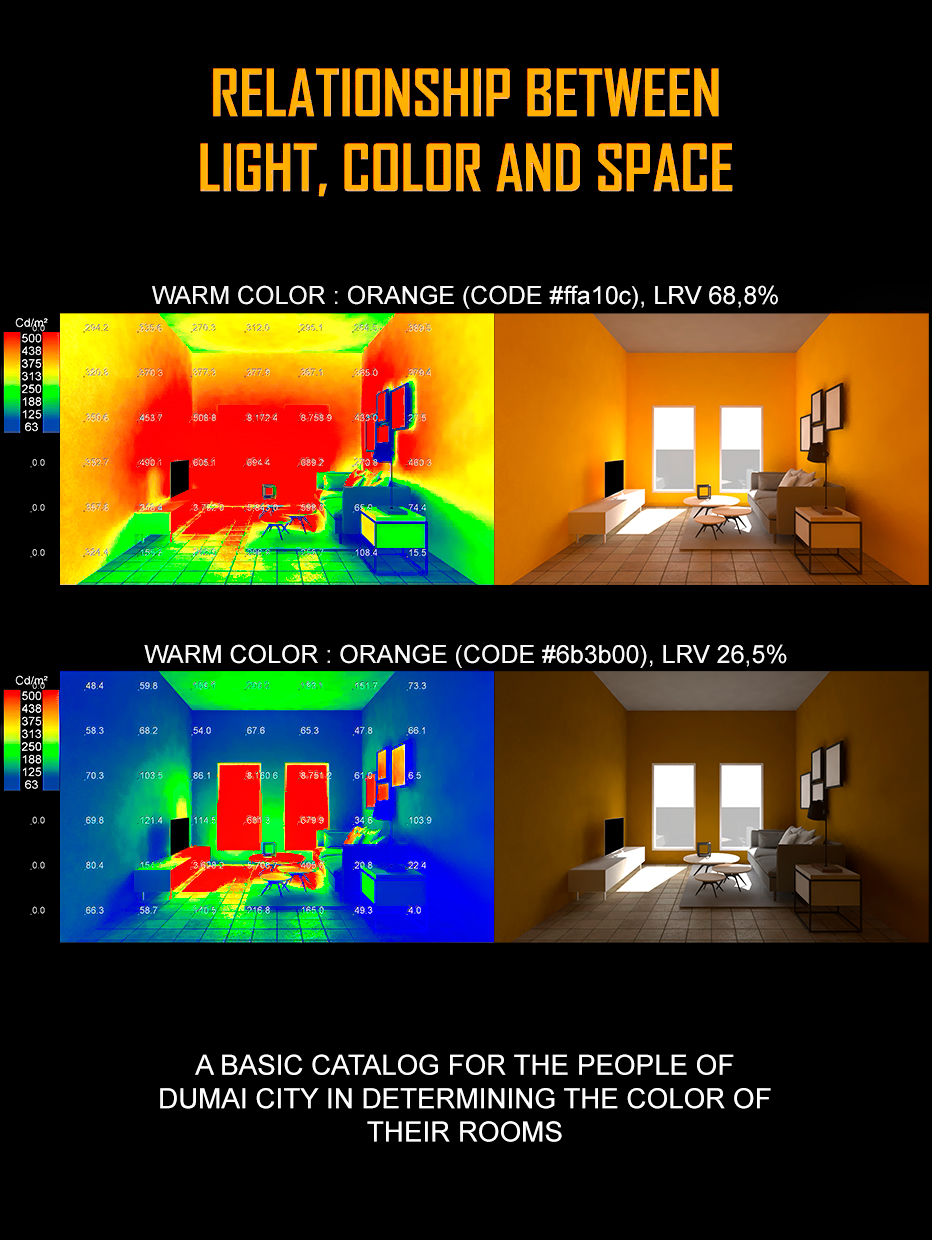RELATIONSHIP BETWEEN LIGHT, COLOR AND SPACE

Category
Daylight in buildings - Region 4: Asia and Oceania
Students
Wahyu Yudistira Nugraha
Teacher
Parlindungan Ravelino
School
Universitas Lancang Kuning
Country
Indonesia
Download
Download ↓
Indonesia is a tropical country that is crossed by the equator, so it only has two seasons (rainy and dry seasons) and gets abundant sunlight throughout the year. In addition, Indonesia is the largest archipelagic country in the world so it has a large area of land to live in, one of which is the city of Dumai, which is located in the Riau province of the island of Sumatra.
Because the land is still large, the type of community house here is a landed house and the majority in building a house do not pay attention to the conditions of the direction of sunlight and cardinal directions, even though each cardinal direction has different sunlight conditions, which affects the needs and layout of the space in the residential house (in this case natural lighting that enters the room).
Also, the majority of people in Dumai city and other cities in Indonesia (other than big cities) use color to paint the interior walls of their homes and the majority choose colors as they like and sometimes randomly. In fact, each color has its own psychological role that can affect the atmosphere of space and comfort and human mental state (cold and warm colors). And each color also has a different LRV value. A color’s Light Reflectance Value (LRV) measures the amount of visible and usable light that reflects from (or absorbs into) a painted surface. Simply put, LRV measures the percentage of light a paint color reflects so that LRV can help make the room brighter or vice versa. So the selection of the right color and LRV for wall paint will help distribute daylight as needed in our room.
So in this project, we analyze the use of color in wall paint to suit the conditions and needs of the people of the city of Dumai. The analysis is divided into 4 steps:
First, the analysis of sunlight coming from the 4 cardinal directions (north, south, east, and west), aims to determine the intensity of sunlight coming from these 4 directions.
Second, the next step is to group colors based on warm colors, cool colors, color psychology, and color LRV (light reflectance value) values.
Third, from the analysis data obtained in steps 1 and 2, then we try to adjust the data to the rooms in the houses of the Dumai city community into a catalog. The catalog is divided into two types, the first catalog is for houses that have not been built or are still being designed and the second catalog is for houses that have been built.
Fourth, this is the last step of our analysis journey, which is to prove the results obtained in steps 1,2, and 3.
The purpose of this project is to become a basic catalog for the people of Dumai city in determining the color of their rooms, and the results of this analysis can be developed further in the future.

































